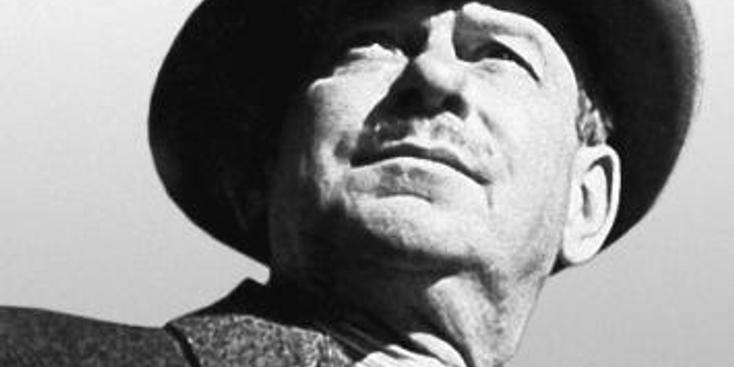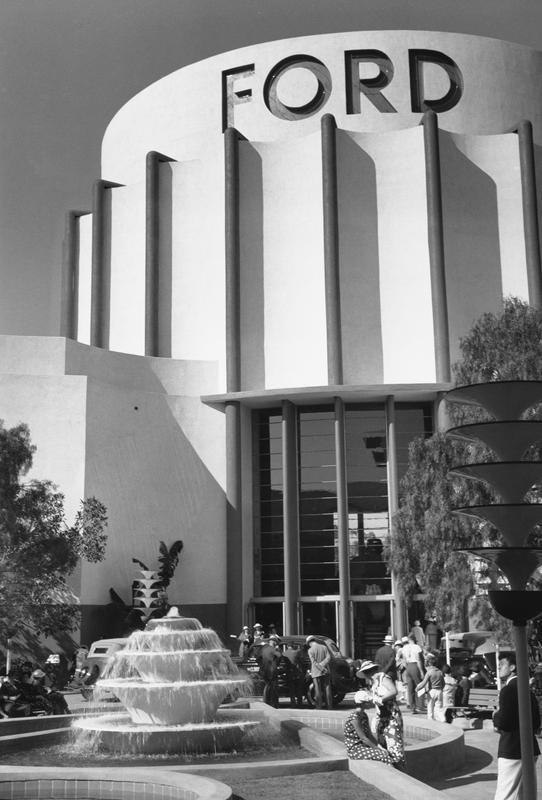Walter Dorwin Teague
Architect | 1883 - 1960
Widely acclaimed as a design renaissance man during the first half of the 20th century, Walter Dorwin Teague was much more than an architect. His work in industrial and graphic design has been recognized for decades.


Born in Decatur Illinois, Teague grew up amongst Quakers in Pendelton, Indiana before studying at the Art Students League of New York (1903-1907). Teague worked in advertising, graphic, packaging and product design in the years leading up to the Great Depression. His talents emerged in industrial design and corporate identity - most notably Teague’s work for Kodak and Texaco. Of the latter efforts, one Teague’s Texaco service stations can be found at the corner of First and Robinson in Hillcrest.
His service stations for Texaco highlighted the metamorphosis of the gas station to become a roadside one-stop shop for much more than gasoline. As the Great Depression reshaped the country, and streamline modern took an evolutionary step in architecture past art deco ornamentation, new service stations took on contemporary streamlining pushed by Teague, Raymond Loewy, Norman Bel Geddes and Gilbert Rohde – key designers of modern America at the time. Embracing the International Style and cleaner lines professed by the Bauhaus, the widespread proliferation of the service station swiftly pushed forward the look of the country’s built environment. Teague was hired by Texaco in 1934 to redesign the identity of the company and its retail outlets – seeing thousands of the company’s clean, white, glass, stucco and enameled steel service stations built across the US, re-imagined what was early a dirty, greasy enterprise.
Exhibition design was instrumental in proving himself on a grand scale. As an architect and designer, Teague’s Ford Building at The Century of Progress 1933-34 fair in Chicago, Texaco Hall for the Texas Centennial Exposition (1935) in Dallas, Ford Building for the California Pacific International Exposition in San Diego and his National Cash Register Building, Ford Building and US Steel pavilion at the New York World’s Fair (1939) pushed his talents to international acclaim.
Teague’s design of the Ford Building in Balboa Park, served the company’s marketing ambitions for the California Pacific International Exposition held in Balboa Park in 1935-36. Originally intended to mimic a V-8 engine, the two circular portions (creating a figure-8 from above) of the building were highlighted by a fountain in the shape of Ford’s V-8 logo of the era. The light fixtures reportedly mimic engine valves. The interior included murals depicting the history of transportation. As one would expect, Ford used the pavilion to display their latest line of cars. The automaker went beyond that – by assembling cars on-site and offering a test track for visitors to drive them. After an estimated 2.5 million visitors toured the site, Ford donated the building to the City. Between 1936-1946, the building was used for military storage and training. Having survived threats of demolition, the site reopened in 1980 as the new home of the Air & Space Museum.
Following World War II, Walter Dorwin Teague’s firm grew significantly as a wide array of large US companies sought them out – including Procter & Gamble, Boeing, DuPont, General Foods and the US Government.
Partial List of San Diego Projects
Ford Building (1935)
Pan American Plaza, Balboa Park
Texaco Station
3864 1st Ave
Can't Miss Modern!
Sign up for our newsletter and get exclusive content from Modern San Diego.